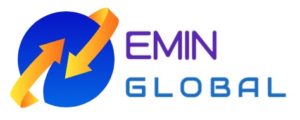Selective Soldering
Selective soldering is an automated system that works by pumping molten solder through a nozzle that coats the leads extending from the bottom of the circuit boards. Selective soldering is applied in PCB assembly for through-hole components, which has increased in popularity because double sided PCBs have become more popular due to their reduction in size and weight in the products where they are used.
Our fully automated selective soldering system is able to be programmed to move in any direction that the operators require. Additionally, the operators can also program the temperature and length of time of the solder application in order to achieve the optimal effect.
Different from traditional wave soldering processes, our automated selective soldering process is comprised of three stages:
1. Fluxing the necessary components selected for soldering. The fluxer can spray single spots or tracks with high precision and volume control.
2. Preheating the PCBs. The selective soldering system has far-side infrared preheaters in order to maintain even heating throughout the circuit board.
3. The site-specific soldering nozzle program can be customized to accurately apply the solder to the selected components. The soldering nozzle applies flux to the through-hole components on PCBs. A solder fountain is formed, and the solder nozzle passes through the selected components to apply solder to the leads of the components.
Different from wave soldering and hand assembly for through-holes, selective soldering is a highly flexible process that offers several unique advantages over the others. Such as:
- Selective soldering provides even preheating. It will not overheat components and boards and also ensures dependable solder joints. Specifically, hand soldering can be problematic when used on boards that are thick or have thick copper layers for ground and power planes. The problem is that hand soldering irons do not heat sufficiently to allow the solder to form a proper solder joint. Hand soldering is not able to form a 100% connection which causes connection issues, or allows components to fall off of the board completely. Our selective soldering process avoids these issues by using a far-side infrared preheater in order to maintain even heating components and boards when dealing with thick copper boards.
- Selective soldering allows for setting different parameters for different components, and the parameters can be adjusted to optimize the process, unlike wave soldering.
- The selective soldering method can be programmed to work with unique pin configurations and also has other beneficial applications. Soldering time is also reduced as the wide nozzle is capable of soldering as many as three rows of connector pins in a single pass.
- This process guarantees reproducibility at nearly 100% reliability to meet the IPC 610 class 2 and 3 requirements.
- Adhesives are not required when soldering the reverse side.
- When soldering circuit boards that have a dense concentration of through hole pins, it is difficult to hand solder as the space for the soldering iron is limited. Selective soldering solves this problem as it uses a wide nozzle capable of soldering a large number of pins.
- Selective soldering can solder hard to reach connector pins effectively, when using hand assembly is not possible and when using wave soldering is less effective.
- When using SMT combined with thru-hole component placement there are instances where there is not enough room for the placement of protective fixtures around the SMT parts to allow for the use of the wave soldering technique.
- Selective soldering does not need wave solder pallets which cause extra cost for double sided PCB assemblies.
- The quality of selective soldering is more consistent when compared with hand soldering. Hand soldering frequently produces varied results, whereas the selective soldering method ensures the consistent solder joint quality.
- The surface of the circuit board is clean if using selective soldering, because the flux is only applied around the pads and the leads of the component, this is not the same as using wave soldering which can cause flux residues to remain on the surface of the circuit board. Usually these flux residues need to be eliminated because it can look dirty and feel sticky, it also causes extra labor costs to clean off.
In certain cases, hand assembly and wave soldering cannot be used or may be less effective, selective soldering is the superior choice or even the only solution. Selective soldering is able to provide solutions in all of these situations.
Our Selective soldering system is fully automated, which assembles boards quickly and eliminates the downside of low yield rate from semi-automated selective soldering that are more commonly seen in the electronic manufacturing industry.
For more information about our selective soldering capabilities and effectiveness, Contact us to learn how our selective soldering services can benefit your next project. Our friendly, professional staff will be happy to answer all of your questions.

